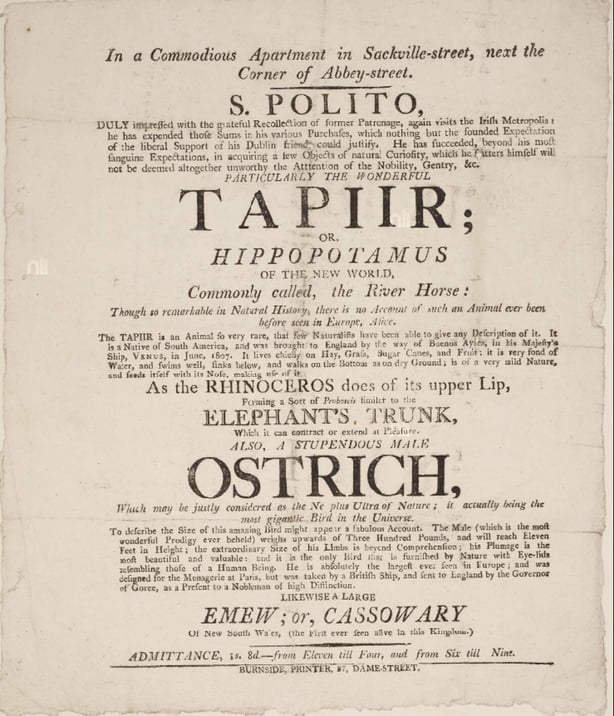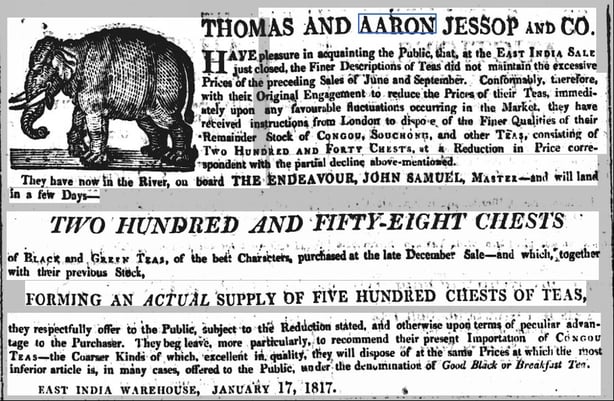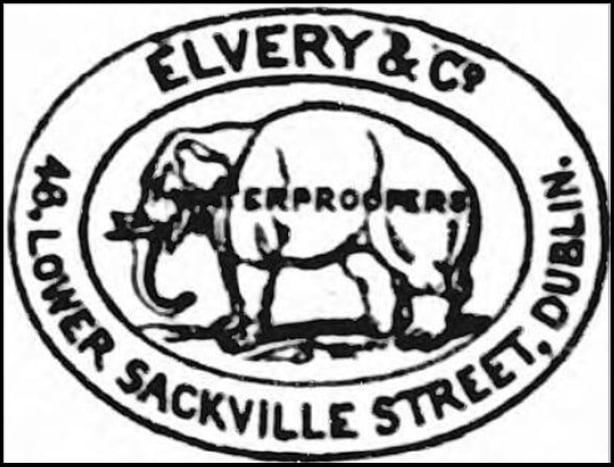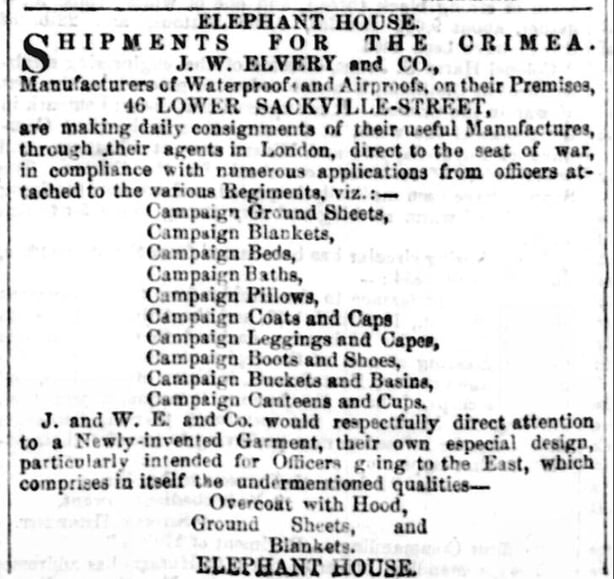Analysis: The building was one of several around O'Connell Street associated with the display of wild animals in the early 19th century
This article is now available above as a Brainstorm podcast. You can subscribe to the Brainstorm podcast through Apple Podcasts, Stitcher, Spotify or wherever you get your podcasts.
Editor's note: This podcast was recorded before we heard the sad news that Dr Joe Rodgers had died unexpectedly on June 5th last. Joe was a regular contributor to RTÉ Brainstorm and we were big fans of his erudite and entertaining pieces on the history of Dublin's O'Connell Street. He was a superb writer who could always convey his fascination with the subject matter to the reader. We shall miss him. Our condolences to his partner Niamh, his children Seán and Nóinín and all his family, friends and colleagues at DCU.
In 1850, Elverys sporting goods store was opened on Dublin’s Lower Sackville Street (or O'Connell Street as it is known today). The company is one of the oldest surviving retail establishments in Dublin and has 55 stores nationwide. But given their fascinating history on Dublin’s main street, its a shame that the site contains nothing of its past or origins. The roots of the company's history - and its trading symbol, an elephant - can be traced back to 'Elephant House’ on Sackville Street in the early 1800s.
The extension of Sackville Street to the River Liffey at the end of the 18th century resulted in the building of Parisian styled shop-houses on Lower Sackville Street. These purpose built units were designed to attract a more commercial class to the street, just as its older residential nobility was fading away. Common occupancy in the early 19th century was typically represented by linen drapers, jewellers or opticians etc. on the ground floor, with residents often occupying rooms above the other floors.
A surviving hand-bill advertisement from 1808 reveals a private display of wild animals in one of these premises on the corner of Sackville Street and Abbey Street, number 46, the location of Supermac's today. This was not unusual for the time and other surviving records show various animals on display in the period.

For example, an exhibition of curious birds and animals in their cages was advertised at Sackville Street in 1805, while several black swans and an ostrich were on display there in 1808. A large, exotic parrot escaped from a window at 8 Lower Sackville Street in 1815, and a large reward was offered for its return. Furthermore, a 'monster menagerie' containing 100 animals including lions, elephants, tigers and snakes were on display at the Rotunda gardens in 1856.
The advertisement from 1808 invited viewers to attend a 'Commodius apartment on Sackville Street next to the corner with Abbey Street’ twice a day, morning and afternoon to view a small elephant, or tapir, for the price of one shilling and sixpence. The bill refers to the tapir's elephant-like trunk. It would appear, as is often the case with Dublin slang, ‘Elephant House’ was born, and the name stuck.
Aaron and Jessop moved their grocers ('East India Warehouse') from Henry Street to 46 Sackville Street, the same building in 1817, and early adverts included the image of an elephant. Subsequent ads contained the name ‘Elephant House’. This grocery store was taken over by a merchant named Ruskell in the 1830s, and Cox & Bailey in the 1840s. Both of these maintained the name of Elephant House.

J. W. Elvery opened J. W. Elvery & Co Manufacturers of Waterproof Fabrics and Garments at 46 (later 46-47) Lower Sackville Street on 11 November 1850. The extended Elvery family were involved in the India Rubber business and this store and location was to become an institution on the retail streetscape of Dublin for over 100 years.
Branching from here onto other streets, Elverys became synonymous with outdoor pursuits and sports, later becoming the most prominent sporting store in Dublin, patronising many of the associations games which formed in the latter 19th century, not only of 'garrison games' such as football, rugby and cricket but also of Gaelic games.

Upon opening, Elverys advertised a large stock of waterproof garments for travelling and outdoor pursuits such as riding, walking, driving, shooting, fishing and for sea voyages consisting of coats, capes, caps, trousers, jackets, leggings, car aprons and railroad wrappings. Ladies apparel consisted of riding and walking petticoats made to order and to measure. Additionally they sold airproof beds, cushions and pillows as well as portable baths and bellows.
The outbreak of the Crimean War in the 1850s presented an opportunity for Elverys to supply Irish based officers in the armed forces with additional kit for outdoor campaigns, and they advertised towards this market with great success.

The store advertised directly to officers, particularly those in the Curragh who were likely to be shipped to the front. The company sold 'campaign' beds, ground sheets, pillows, cushions, baths, buckets, basins, canteens, cups, leggings, trousers, capes, caps and boots among others. They were also particularly keen to advertise the availability of a design which had been created by Elverys themselves, a proto-sleeping bag which became known as the ‘Crimea Wrapper’.
The object consisted of a combined waterproofed groundsheet, blanket, cape and hood and was heavily advertised throughout the war with selected testimonials from officers who were likely provided with free goods for their support and letters of the same. For example, Lieutenant Beresford of the 88th Connaught Rangers swore to its comfort and satisfaction in 1855, and such was the success of the garment that Elverys mailed orders directly to the Crimean front.
We need your consent to load this rte-player contentWe use rte-player to manage extra content that can set cookies on your device and collect data about your activity. Please review their details and accept them to load the content.Manage Preferences
From RTÉ Radio 1's History Show, Dr Paul Huddie on the Crimean War in the 1850s, its effect on Irish society, and parallels with what's happening today
As the century wore on, Elverys branched out to other locations including Abbey Street in Dublin, Cork and a shop in London, all of which were also situated in an ‘Elephant House’. Elverys began to branch into two significant categories of business towards the latter end of the nineteenth century; tourism and associated sports.
Recognising the commercial prospects of tourists arriving in and travelling through Dublin on their way to places like Killarney and elsewhere, Elverys targeted anglers for their extensive collection of equipment and clothing. Likewise. The arrival of associated sports from the 1880s and on, Elverys entered a new phase of their commercial life as suppliers of equipment and clothing to teams playing rugby, football, cricket, hockey and croquet, as well as individual sports such as golf, gymnastics, athletics and boxing.
In the mid 1890s Elverys annexed number 46 next door, taking the address 46-47 Lower Sackville Street. The new expansion was overseen by architect George Palmer Beater in 1894. During the development, the symbol of the company and the building for almost fifty years was destroyed. A statue of a golden elephant which adorned the doorway of number 46 crashed to the street and was destroyed while attempting to reinstate it over the new amalgamated entrance.
Read more: What will happen to the last Georgian house on Dublin's O'Connell Street?
A replacement was created, however, and in the weeks leading up to its installation, Elverys played mystery games with Dublin newspaper readers by posting anonymous adverts declaring ‘Look out for the Elephant’, and ‘Where is the Elephant?’. The advertisements were an attempt to draw attention to the arrival of the new Elephant mascot over the store which arrived by cart in February 1895 and was installed above the entrance.
Elvery’s was extensively looted and the building damaged in 1916. The company claimed £9,547 7s 5d for damage to 46-47 Sackville and were awarded payment of £6,818 14s 6d. A new premises was rebuilt by the same architect between 1917-1920. During the Battle for Dublin in July 1922, Elvery’s staff were held up by ‘armed men’ who stole a significant number of clothing items and a motor lorry which they drove off. The building was also occupied by National Army troops and extensively damaged. The company claimed £5,000 in compensation.
The company held a centenary dinner in 1950, before co-director F. F. Elvery died aged 73 in 1952. In 1954, the company was re-organised and the building sold. If you stand at the entrance to Supermac's today, you can still see the plinth above the door on which the elephant used to rest. Today, Elverys occupies a premises on Suffolk Street…and there is an elephant above the door.
Follow RTÉ Brainstorm on WhatsApp and Instagram for more stories and updates
The views expressed here are those of the author and do not represent or reflect the views of RTÉ






